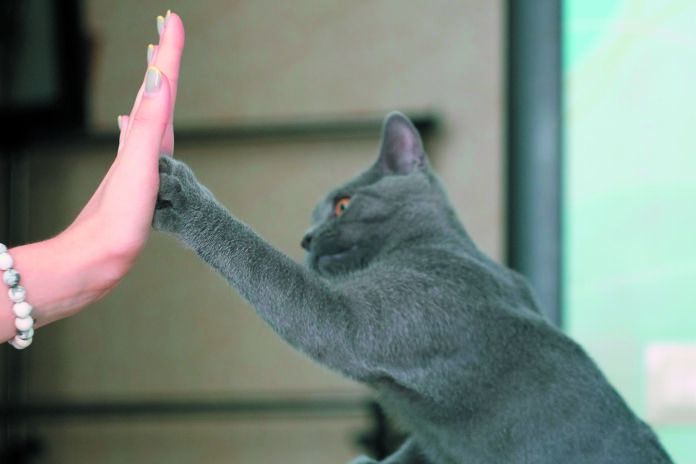There’s a lot of cat lore out
there that people accept as the truth because it gets repeated so often. But frequently, what’s assumed to be true about cats isn’t. Here are six examples.
1. Myth. Cats always land on their feet.
Fact. Cats who are falling have an amazing capacity for turning in mid-air and righting their position so that they land on all four paws. Their anatomy also allows them to land like a parachute. But they have to have the time and the space to get themselves into the proper position. So if they are falling only two or three stories, they may not be able to assume a pose that will let them land upright.
Even if they fall from a high floor and thereby have the extra seconds they need to reach the ground standing, they can — and often do — suffer serious injuries such as leg fractures, broken jaws, concussions, spinal problems, and ruptured organs. It’s just too much impact to keep a cat intact.
That’s why, as the warm weather approaches, you have to make sure not to let your cat near open windows or screens that she can push through. Remember, cats don’t leap from windows. They fall when they are distracted by a bird or something else.
2. Myth. Cats don’t really like to be touched.
Fact. Cats do like to be touched — and frequently. They just tend not to like being petted or stroked for long periods of time. They prefer their frequent interactions with you in small doses. That’s why it’s best to stop petting a cat before you feel ready or before she starts to get antsy. If she wants more, she’ll let you know. In other words, don’t pet a cat absent-mindedly. She sees petting as a kind of “conversation” that you need to pay attention to.
3. Myth. Cats really hate the water.
Fact. Some cats very much enjoy pawing at water and are also excellent swimmers. The Turkish van and Turkish angora are among the breeds that are comfortable in the water. But any cat who has had positive experiences around water during the sensitive period of learning — 2 to 7 weeks of age — will tend to feel okay about it. Of course, dipping in a paw or playing in water however you want is very different from being held still for a bath, which may be part of the reason cats are often erroneously assumed not to be water lovers.
4. Myth. A cat can’t learn tricks.
Fact. Many cats really enjoy learning tricks and can “Sit” and perform other moves just like a dog. They enjoy the mental stimulation of learning, and they enjoy the together time with you. With an inexpensive clicker that you can buy at a party goods store and some delicious morsels of food, you can even teach a “High 5.” Start with the food closed tightly in your fist. Your cat will sniff. The moment she lifts her paw even slightly off the floor, click and reward her with the food. Eventually she will touch her paw to your hand. When she does, add the “high 5” cue. She’ll come to understand that you’re training her by saying “High 5” when you want to give her something rather than that she’s training you to give her something by touching your hand.
5. Myth. Cats are finicky eaters.
Fact. Cats like to eat mice and other small rodents; they are not finicky. A lot of people turn their felines into finicky eaters. Felines need relatively little food, so their people worry they’re not eating enough and start trying to entice them with more and more variety. When cats realize they have so much to choose from, it’s easy for them to turn up their noses at the abundant offerings.
6. Myth. Cats who live entirely indoors don’t need ID tags.
Fact. According to one estimate, about 40 percent of cats who end up at shelters are indoor-only pets that got out. And only 3 percent of those cats are eventually reunited with their owners. Microchips are important, but an ID tag (best bet is a stretchy elastic tag with the cat’s name and your phone number rather than a metal tag that can get snagged on something and come off) will help ensure a cat gets back to you — often without her ever having to be taken to a shelter in the first place.




